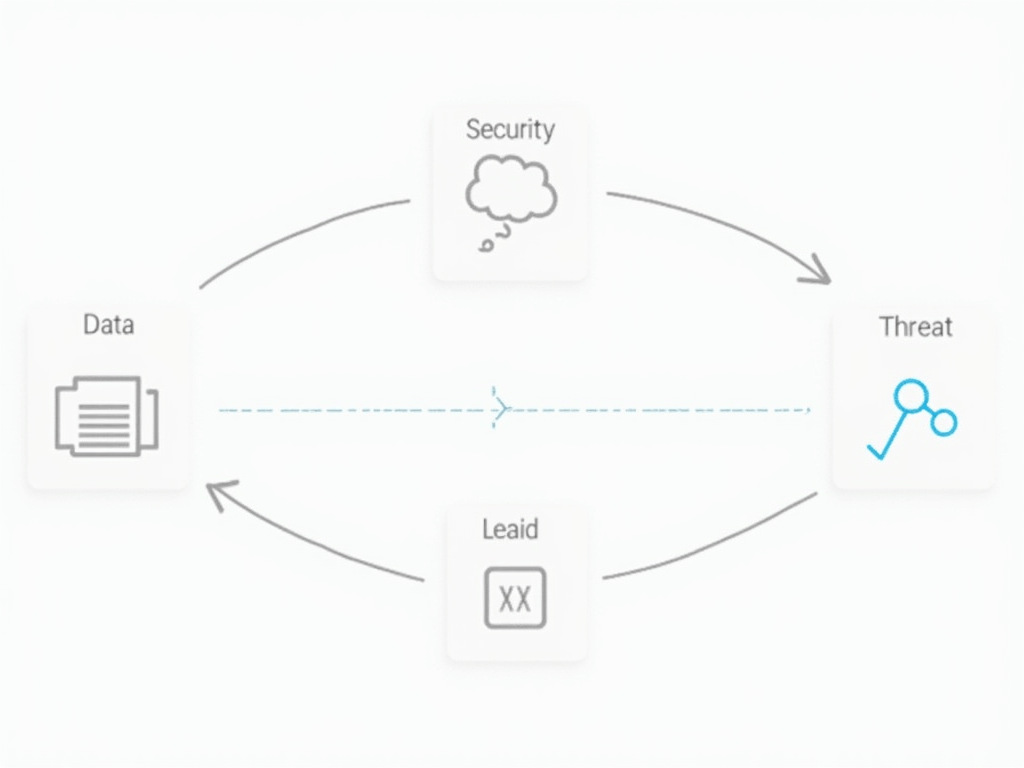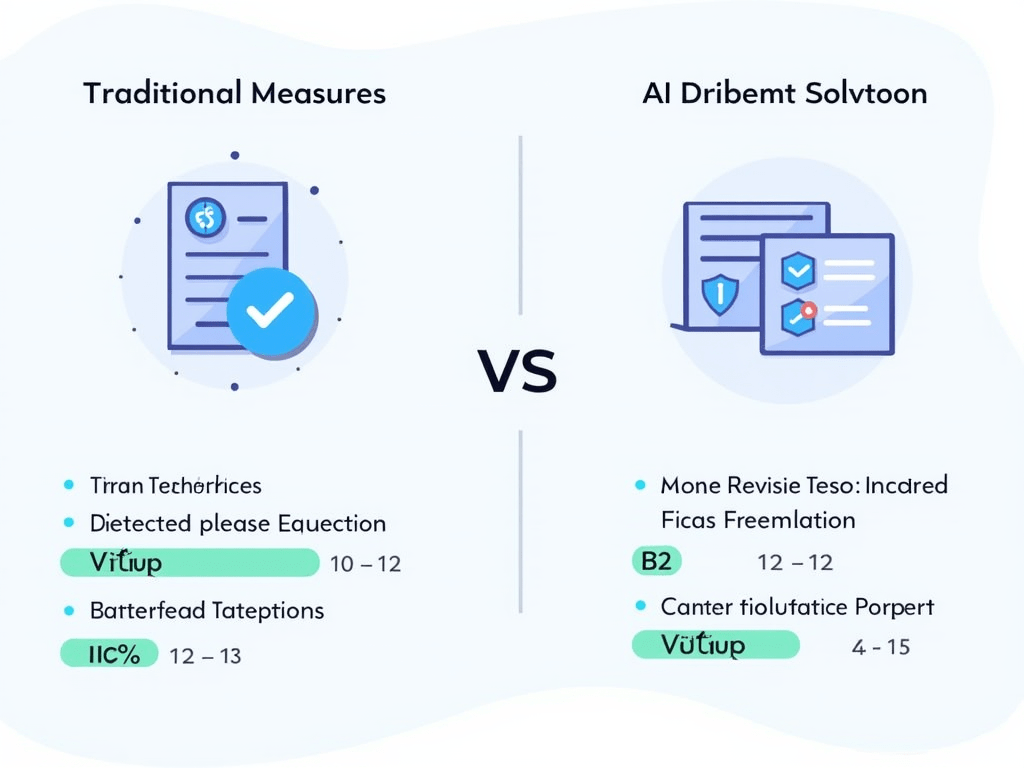Introduction: A Deep Dive into Cybersecurity
Table of Contents
We’re stepping into an age where Artificial Intelligence (AI) isn’t just making waves; it’s creating a whole new playing field. Think about it—AI is everywhere. It’s in your pocket, suggesting the next song you’ll love or the fastest route home during rush hour. It’s in your doctor’s office, helping diagnose illnesses with pinpoint accuracy. But with every breakthrough, there’s a flip side: the question of security. (Read our full guide on AI Tools and Applications.)
AI’s expansion into sectors like healthcare and finance has brought unimaginable advancements, but it’s also opened the floodgates to new vulnerabilities. In healthcare, AI can analyze patient data to predict diseases before they manifest. Yet, these vast data troves are gold mines for cybercriminals. A breach here isn’t just about stolen data; it’s about lives potentially at risk.
In finance, AI algorithms assess credit risk, detect fraud, and even trade stocks. But imagine a scenario where hackers manipulate these algorithms—it’s not just money that’s lost, but trust in entire financial systems. We’ve already seen AI-generated deepfakes that can deceive even the sharpest eyes, raising the stakes for security experts.
The need to protect our data is more urgent than ever. Steps like implementing robust encryption, conducting regular audits, and fostering a culture of cybersecurity awareness are crucial. It’s no longer enough to react; we must be proactive. As AI continues to weave itself into the fabric of everyday life, safeguarding our data isn’t just a technical challenge; it’s a societal imperative. The key takeaway here is that as AI evolves, our approach to cybersecurity must evolve with it, ensuring that innovation doesn’t come at the cost of safety.

Key Benefits and Advantages
The marriage of AI and cybersecurity is a double-edged sword, presenting both groundbreaking possibilities and daunting obstacles. On the bright side, AI can transform how we handle security threats. Imagine a world where AI systems tirelessly monitor networks, identifying suspicious activities at lightning speed. This isn’t just about faster detection but smarter responses. AI can learn from past incidents, adapting and improving its strategies over time. For example, machine learning algorithms can recognize patterns of ransomware attacks, potentially stopping them before they cause damage.
However, the flip side is equally compelling. AI’s capabilities can be hijacked by those with malicious intent. Imagine an AI system manipulated to overlook certain threats or even create them. This risk isn’t hypothetical. In 2019, experts highlighted how adversarial attacks could trick AI models into misclassifying data, a tactic that could be used to bypass security measures. Therefore, it’s crucial for organizations to create comprehensive strategies. This involves not just deploying AI but doing so with a keen eye on potential vulnerabilities.
From a practical standpoint, this means investing in AI systems that are not only efficient but also secure by design. Regular audits, continuous learning updates, and ethical guidelines are part of this robust framework. The key takeaway here is balance: harnessing AI’s strengths while diligently guarding against its weaknesses isn’t just an option; it’s a necessity. Organizations that succeed will likely lead the way in a digital landscape where the stakes are higher than ever.
- AI has truly revolutionized cybersecurity by accelerating threat detection and response times. Imagine trying to find a single grain of sand on a vast beach. That’s often what traditional cybersecurity teams face. But AI, with its incredible processing power, can sift through mountains of data faster than any human ever could. For instance, Google’s AI can now identify malware in real-time, blocking threats before they even reach users. This is not just a step forward; it’s a leap.
- In today’s AI-driven world, relying on a single security measure is like locking your front door but leaving your windows wide open. A multi-layered security approach is essential. Think of it as a castle with multiple walls, each serving as a barrier to keep the intruders out. Firewalls, encryption, and biometric access controls are just a few layers that work together to protect sensitive data. The goal? Make it as difficult as possible for attackers to breach your defenses.
- The fusion of human intelligence and AI is where cybersecurity becomes formidable. AI might be fast and efficient, but it lacks the intuition and judgment of a seasoned cybersecurity expert. When AI and human expertise combine, they create a robust defense mechanism. For example, while AI can analyze patterns and predict potential threats, human analysts can evaluate these insights and decide on the best course of action. It’s like having a skilled detective working alongside a supercomputer.
- Recent advancements have seen AI’s predictive capabilities soar, thanks to big data. By analyzing vast datasets, AI can identify patterns and anomalies that might signal an impending attack. This foresight allows organizations to reinforce their defenses proactively. For instance, AI systems in the financial sector can flag unusual transaction patterns, helping prevent fraud before it occurs.
- Machine learning, a subset of AI, has been pivotal in reducing false positives in threat detection. Think of it as a spam filter for your cybersecurity efforts. By learning from past experiences, machine learning algorithms can distinguish between legitimate threats and harmless anomalies. This means fewer false alarms and more focus on real threats. In practical terms, this reduces the workload on security teams, allowing them to allocate resources more effectively.
How It Works: A Practical Explanation
AI isn’t just a buzzword in cybersecurity; it’s fundamentally changing how we approach digital protection. Technologies like machine learning and natural language processing (NLP) are at the forefront of this transformation. Let’s break it down.
Firstly, machine learning models excel at sifting through enormous data sets. Imagine a security analyst trying to manually review logs from thousands of servers—it’s nearly impossible. But machine learning can process this data in seconds, spotting anomalies and potential threats as they happen. For instance, consider a large financial institution. These models can identify unusual patterns, like a sudden spike in transactions from a location far from the user’s typical activity, flagging it for further investigation.
Natural language processing, on the other hand, brings a different strength to the table. NLP helps in understanding and processing human language, which is crucial for threat intelligence analysis. For example, it can analyze vast amounts of text from hacker forums, social media, or news articles to uncover emerging threats or tactics. In my experience, this capability is invaluable for anticipating attacks before they happen.
A real-world example: a cybersecurity firm used NLP to scan online discussions for mentions of specific malware. They detected a new variant being discussed before it hit mainstream targets, allowing them to prepare defenses in advance. The key takeaway here is that AI, with its advanced capabilities, not only enhances current cybersecurity measures but also offers new ways to preemptively tackle threats.

Case Study: A Real-World Example
In my experience, AI’s impact on cybersecurity goes beyond mere numbers. Take, for instance, the case of a global bank that harnessed AI to combat fraud. By employing machine learning algorithms, the bank was able to scrutinize transaction patterns across millions of data points. This enabled them to pinpoint suspicious activities with remarkable precision, leading to a 30% drop in fraudulent transactions. It’s not just about reducing numbers; it’s about safeguarding customers’ trust and financial integrity.
Consider another scenario involving a tech firm that faced a deluge of phishing attacks. They turned to AI-powered solutions to stay ahead of cybercriminals. By analyzing email metadata and behavioral patterns, AI systems could flag potential threats before they reached employees’ inboxes. This proactive stance led to a noticeable decline in phishing incidents, enhancing both security and productivity. What’s noteworthy here is how AI doesn’t just react to threats; it anticipates them, creating a more resilient security posture.
Beyond these examples, AI in cybersecurity is also about adaptability. As threat landscapes evolve, AI systems learn and improve, akin to a seasoned detective who gets better with every case. It’s this ability to adapt and learn from new data that makes AI indispensable. For organizations, this translates into not just immediate threat reduction but also long-term security strategies that evolve alongside emerging threats. The key takeaway here is that AI isn’t just a tool—it’s becoming a crucial ally in the ever-changing battle against cybercrime.
Conclusion: Key Takeaways
Bringing together cybersecurity and AI is like combining the expertise of a seasoned detective with the speed of a supercomputer. It’s a powerful alliance that offers organizations the ability to not just react, but proactively strengthen their defenses against the ever-evolving landscape of cyber threats. In my experience, integrating AI into cybersecurity workflows allows for more than just faster threat detection. It helps in predicting potential vulnerabilities before they become critical issues.
Consider how AI-powered tools can sift through vast amounts of data in real-time, identifying patterns and anomalies that might indicate a security breach. This is akin to finding a needle in a haystack, but with AI, the needle lights up like a beacon. For example, AI can analyze network traffic and user behavior to flag unusual activities, such as unauthorized access attempts or data exfiltration, allowing security teams to act swiftly.
However, while AI can provide the muscle, the human touch is indispensable. Security professionals bring context and intuition to the table—skills that AI lacks. A common mistake I see is over-reliance on automated systems without human oversight. It’s crucial to remember that AI is a tool, not a replacement for human judgment. From a practical standpoint, the best approach combines AI’s analytical prowess with human expertise to interpret and respond to threats effectively.
Looking ahead, the key takeaway is that organizations must remain agile. Cyber threats and AI technologies are both advancing rapidly, like a race with no finish line. Continuous innovation and adaptability will be the cornerstone of any robust cybersecurity strategy. Embracing this dynamic duo of AI and human intelligence is not just beneficial—it’s essential for safeguarding data in today’s digital age.
